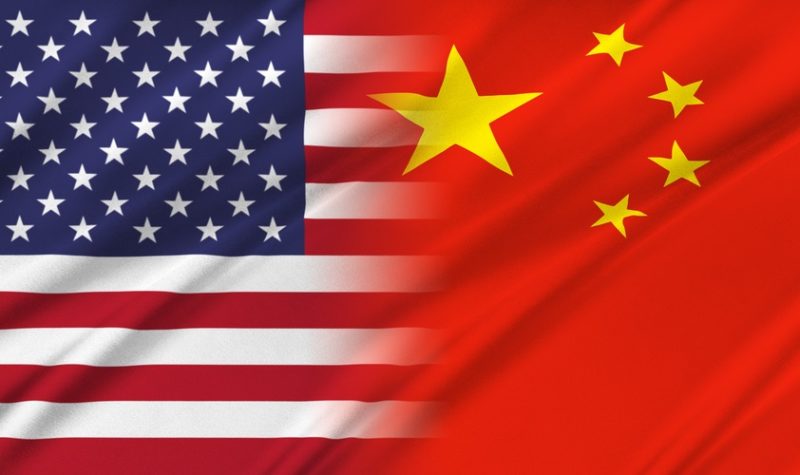China Vs USA: Which economy would you bet on?

Is the global economy swinging decisively in China’s favour, or will it prove a longer term struggle? Bill Blain investigates…
Which of two great global powers, each with a foundation narrative based around conflict, would you favour today? The one struggling with an incoherent political process, growing inequality, rising social tension, crumbling infrastructure, limited healthcare and declining educational standards. Or would you choose the nation proving resilient and posting positive growth in this pandemic year, with strong government, fast growing global companies, a burgeoning consumer middle class, and high returns?
One is the USA – forged in successful rebellion against Great Britain. The other is modern China – where the humiliation of a century of opium wars, western interventions and Japanese invasion colours its whole being. While the USA holds fast to the rules and aspirations it now regards as sacrosanct from 1776, the Chinese spent a damaging century reinventing and experimenting with autocracy, socialism and communism, and is now reverting to being, once more, the Middle Kingdom – an imperial autocracy with communist characteristics.
Two very different nations – but which would you invest in?
Today US stocks account for around 45% of global equity capitalisation but 65% of global portfolios. China is only 14% of market cap but is spawning more large company IPOs than the rest of the globe together. Yet Chinese stocks make up less than 3% of global investment portfolios. For many years, investors have been unconvinced by China.
The mood is changing. At some time in the next few years China will overtake the US as the world’s largest economy. But, it’s not quite as simple as determining which country offers greater growth prospects, or whether the competing doctrines of free-market or state capitalism will work together or against each other.
The outlook for the US in the wake of the recent election and the pandemic may be messy, but the established principals of free markets, stable and independent regulatory and legal systems, the reliability and transparency of data, plus established market infrastructure, means it’s easy to invest in the US. The dollar remains the benchmark reserve currency.
Chinese markets are more opaque… partially explaining why they are relatively underinvested by foreign investors. Few investors put absolute trust in Chinese data. The decisions of the authorities can often look arbitrary. Chinese objectives and actions sit uneasily with the current fad for investments to tick Environmental, Social and Governance standards (determined in the west).
Despite all the rhetoric about delisting Chinese stocks from US markets, banning Chinese tech companies, and the threats of a cold trade war, one of the critical investment themes of 2020 has been an investment pivot towards China. The arguments are simple – you can’t ignore the size of the Chinese economy, the increasing presence of Chinese goods and services in every market, the fact its middle classes are growing prosperous while incomes elsewhere flatline, and the Renminbi’s likely future as a reserve currency – one that may someday soon challenge the mighty US dollar.
Chinese acceptance of surveillance capitalism raises hackles in the west – because it is state controlled. (Apparently, it’s ok in the west for Alexa to listen into every domestic conversation and computer click and monetise that information on us.) Plans to digitise the Renminbi are met with horror – how will the wealthy avoid taxes when every cent can be digitally traced?
In many ways the US and China are not so different. We know the USA is printing trillions of dollars to support the economy through the pandemic and is distorting asset prices through quantitative easing, while over 20% of companies are effectively “zombies” facing debt collapse if rates rise. Many market participants wonder if a debt-based threat lies ahead for the dollar. In China, public debt is cosmetically smaller while associated regional and state-corporate debt is less certain – but there are growing signs of a debt problem.
Where is future growth likely to come from? Over the last 20 years much of the growth has come from tech. Apple was a struggling computer company, Facebook was a university fad, Amazon was a bookshop that couldn’t afford to rent a store front, and no one had conceived of ideas like Uber, Netflix or fintech. These companies have created enormous wealth. Today, China is churning out the engineers, scientists, coders and maths graduates that will feed its own reinvention of tech and the future. The Chinese are openly going their own way – fuelled by Trump’s calls to put up barriers to stop China stealing western IP. It may prove to have been a classic bolting the stable door after the horse had flown moment.
The arguments comparing the future prosperity of China to the US appear to lean heavily in favour of the Orient.
But maybe we should wait and see. The Chinese regulatory bombshell dropped on Ant Financial, which caused its record-smashing IPO to be cancelled, shocked markets but may have been justified – the authorities demonstrated control by reining in unrestrained new banking tech and imposing risk weighted balance. However, there was clearly an element of battering down Jack Ma, whose comments personally upset Chairman Xi. He is unlikely to be particularly bothered about foreign investors if tensions between China and the US escalate.
Is the global economy swinging decisively in China’s favour, or will it prove a longer term struggle? Could China still find itself held back by the limitations of state capitalism? (Lest we forget… state capitalism never worked well in Europe.)
For now, I shall remain a sceptic, and limit my pivot to China to a modest 5% allocation… Not great results so far – in the first two week since I shifted, I lost 10% on Alibaba!

Comments (0)